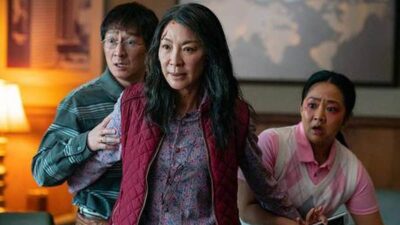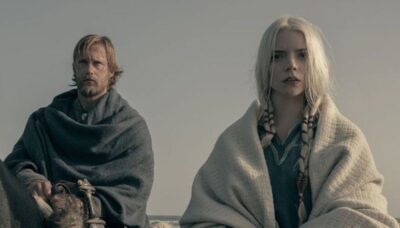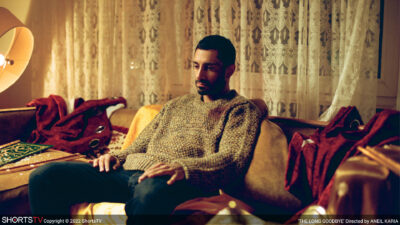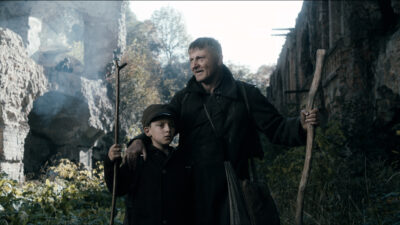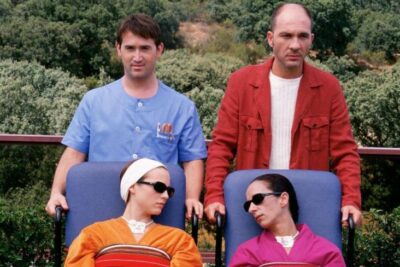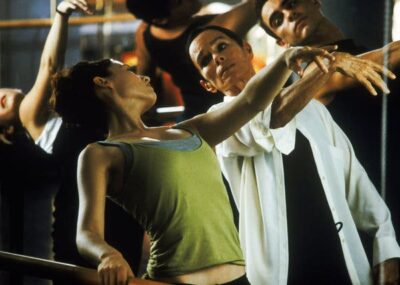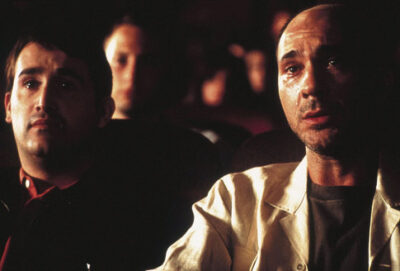The fall of 2021 marked the 50th anniversary of Fiddler on the Roof, the film Pauline Kael called “the most powerful movie musical ever made.” Narrated by Jeff Goldblum, Fiddler’s Journey to the Big Screen captures the humor and drama of director Norman Jewison’s quest to recreate the lost world of Jewish life in Tsarist Russia and re-envision the beloved stage hit as a wide-screen epic. We have an advance screening of Fiddler’s Journey to the Big Screen May 5 at the Royal followed by week-long engagements at the Royal, Playhouse and Town Center beginning May 6.
For a taste of the film, here’s a clip in which composer John Williams and Jewison discuss enlisting the brilliant violinist Isaac Stern to provide the title character’s music.
We are planning a series of Q&As at the Royal: Thursday, May 5th – evening show for LAJFF – Q&A with Daniel Raim (director), moderated by Hilary Helstein (LAJFF); Fri. May 6 – 7:30pm – Q&A with Daniel Raim (director), Sasha Berman (producer), and Michael Sragow (co-writer, co-producer); Sat. May 7th – 7:30pm – Moderated by film critic Kenneth Turan, Q&A with Daniel Raim (director), Sasha Berman (producer), and Michael Sragow (co-writer, co-producer); Wed. May 11 at 7:30pm – Q&A with Michael Sragow (co-writer, co-producer).
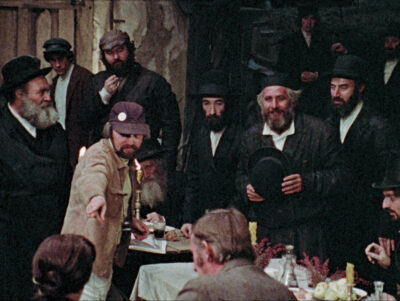
Finally, here’s an excerpt from a rave review Raquel Stecher recently posted on her site Out of the Past:
“Director Daniel Raim continues his quest to champion the art of filmmaking with his latest documentary Fiddler’s Journey to the Big Screen (2022). Narrated by Jeff Goldblum, this documentary takes a deep dive into the making of Fiddler on the Roof (1971), director Norman Jewison’s personal and professional journey and all of the key players who came to together to make one of the greatest musical films of all time.
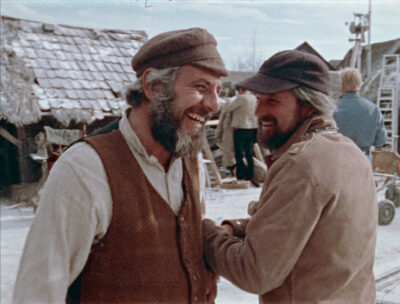
“Fiddler on the Roof was the brainchild of composer Jerry Bock, lyricist Sheldon Harnick and writer Joseph Stein. The inspiration came from a selection of short stories by Yiddish writer Sholem Aleichem called Teyve and his Daughters as well as artist Marc Chagall’s 1912 painting The Fiddler. The play opened on Broadway in 1964 and there was some concern that the story would only appeal to a small Jewish audience. However, Fiddler’s tale of a Jewish dairy farmer who attempts to marry off his five daughters in pre-revolutionary Russia, is a story of family, tradition and the inevitability of change. This gave the story a universal appeal and along with the excellent story and top-notch musical numbers, Fiddler was an international success. And naturally it was destined to become a film.
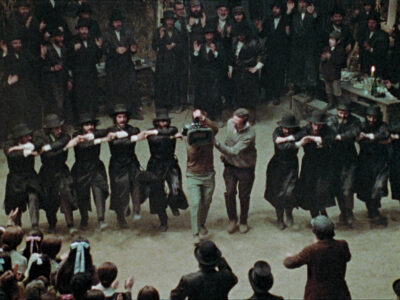
“Fiddler’s Journey to the Big Screen explores the history behind the Broadway show, how Norman Jewison came to be involved, the casting, musical direction, art direction, location scouting, choreography, cinematography and many other elements that came to make the film as well as Fiddler‘s legacy. There is so much here to take in but it never feels overwhelming.
“The documentary includes interviews with director Norman Jewison, lyricist Sheldon Harnick, musical director John Williams, actresses Rosalind Harris (Tzeitel), Michele Marsh (Hodel) and Neva Small (Chava) and film critic Kenneth Turan. There are also archival interviews of Jewison back in 2000 as well as actor Topol and art director Robert F. Boyle. The interviews add so much to this documentary. There is nothing quite like firsthand accounts of an important moment in film history. And much like Daniel Raim’s other documentaries, there are illustrations from artist Patrick Mate as well as plenty of archival footage and behind-the-scenes photographs. The documentary is also is chock full of interesting facts even beyond just the making of Fiddler on the Roof. Watching it felt like I was getting two documentaries for the price of one: the making of a film and the biography of its director.”
Read the rest of Ms. Stecher’s review here.

